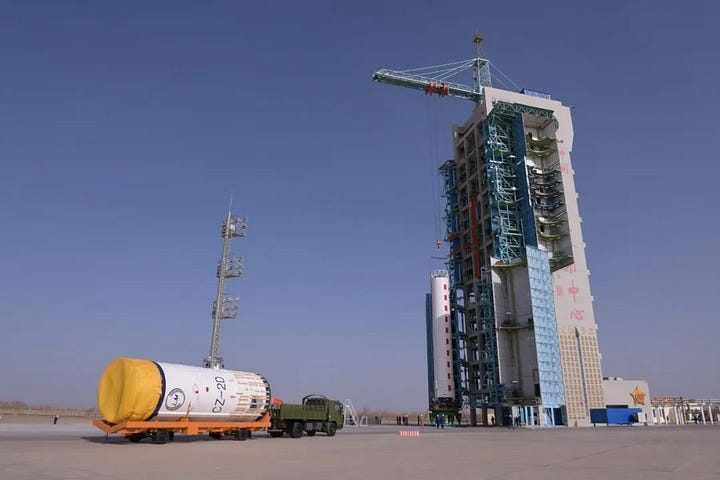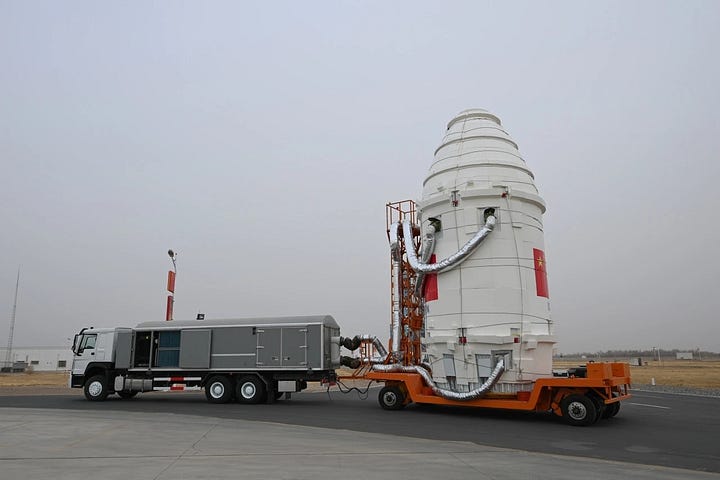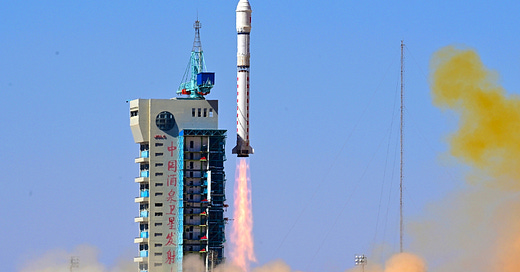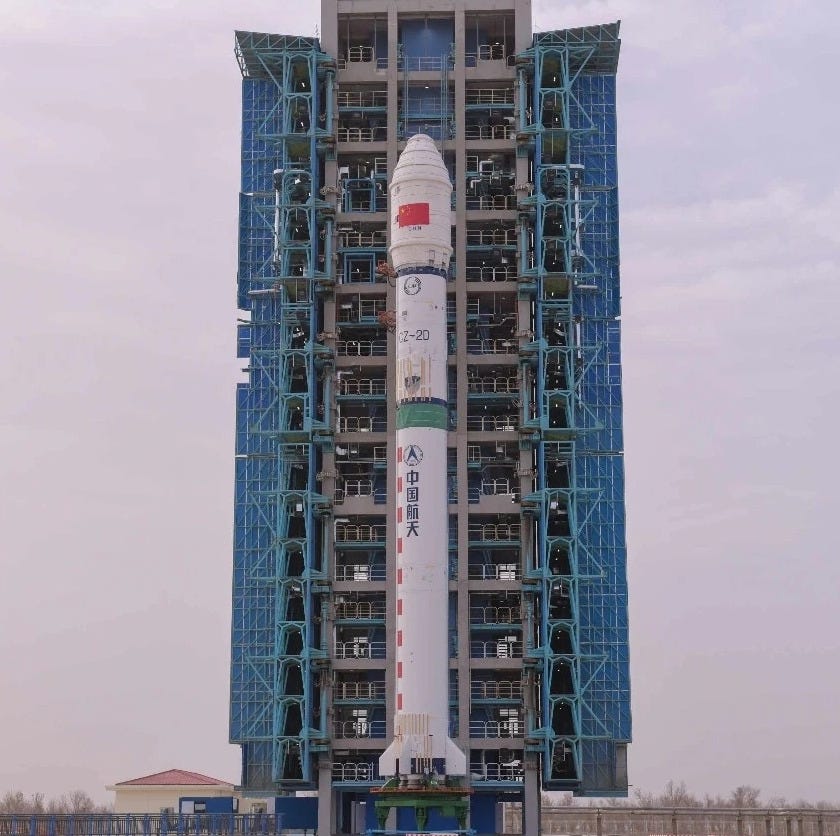New Mega-Constellation Test Group [Long March 2D Y78]
A Long March 2D launched a group of direct-to-device test satellites.
A Long March 2D blasted off from Launch Area 4 at the Jiuquan Satellite Launch Center on April 1st, at 12:00 pm China Standard Time (04:00 am Universal Coordinated Time). Today’s mission had the rocket deliver a group of satellites to low Earth orbit.
Four satellites were reportedly onboard to make up the satellite group, and their mission was said to be satellite internet technology testing and verification. These satellite were developed by Beijing-based GalaxySpace (银河航天) and Changchun-based Changguang Satellite Technology Co Ltd (长光卫星技术股份有限公司), reports China Daily.
Breakthroughs made with the test may be applied to the Shanghai-backed Qianfan (千帆) and Central Government-supported GuoWang (郭望) mega-constellations, which are already deploying satellites.
According to Xinhua, the satellite group will test mobile-to-satellite (direct-to-device, D2D) broadband connections and the integration of space-ground networks. Direct-to-device capabilities will assist in removing mobile signal dead zones worldwide, while an integrated space-ground network will allow for a fast and seamless transfer of data from one point on Earth to another, already proven at slower speeds with existing communications satellites.
According to the Shanghai Academy of Spaceflight Technology, today’s launch of the Long March 2D utilized a 3.8-meter diameter composite fairing. This fairing is said to have expanded the payload space, streamlined pre-launch foreign-object-debris removal due to its smooth surface, and improved electrostatic protection.
Today’s launch was the 97th mission for the Long March 2D, the 231st Long March vehicle from the Shanghai Academy of Spaceflight Technology, and the 567th launch of the Long March launch vehicle series. This was also the 18th launch from China in 2025.
Liftoff video via 小陵气象航天时间 on Weibo.
Check out the previous Long March 2D launch
Big Satellite, Small Satellite Launched for Earth Imaging [Long March 2D Y100]
A Long March 2D blasted off from Launch Area 4 at the Jiuquan Satellite Launch Center on March 15th at 12:11 pm China Standard Time, or 04:11 am Universal Coordinated Time. This launch carried a commercial satellite and a small spacecraft into sun-synchr…
What is the Long March 2D?
This section is for those less familiar with China's Long March series of launch vehicles.
The Long March 2D is also one of the oldest launch vehicles from China, performing missions regularly to low Earth and sun-synchronous orbits by the Shanghai Academy of Spaceflight Technology, as a two-stage version of the Long March 4 vehicles. The two stages of the launch vehicle both burn Dinitrogen Tetroxide and Unsymmetrical Dimethylhydrazine.
The payload capacity of the launch vehicle is currently as follows:
3,500 kilograms to low Earth orbit
1,300 kilograms to a sun-synchronous orbit
The first-stage is powered by four YF-21C engines, which generate 302 tons of thrust burning Dinitrogen Tetroxide and Unsymmetrical Dimethylhydrazine. The second-stage is powered by a single YF-22C engine and four YF-23C verniers that generate 80 tons of thrust while also burning Dinitrogen Tetroxide and Unsymmetrical Dimethylhydrazine.
On the launch pad, the Long March 2D is 41.05 meters tall and weighs 232,250 kilograms when fully fuelled. The first and second stages have a diameter of 3.35 meters, with the fairing having a diameter of either 3.35, 3.8, or approximately 4 meters.
So far the Long March 2D has flown from all three inland launch sites, the Jiuquan Satellite Launch Center, the Taiyuan Satellite Launch Center, and the Xichang Satellite Launch Center.









![Big Satellite, Small Satellite Launched for Earth Imaging [Long March 2D Y100]](https://substackcdn.com/image/fetch/w_1300,h_650,c_fill,f_auto,q_auto:good,fl_progressive:steep,g_auto/https%3A%2F%2Fsubstack-post-media.s3.amazonaws.com%2Fpublic%2Fimages%2F3f2911bc-c92d-4313-8e50-67f7762eae76_2899x1926.jpeg)
